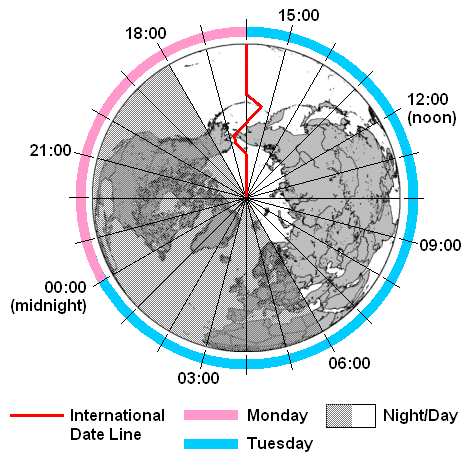A plane full of jet setters was given the rare opportunity to ring in the new year twice this week after their flight set off in the early hours of 2025 and landed in the last moments of 2024.
Cathay Pacific flight CX880 took off from Hong Kong International Airport at 12:21 am local time on January 1, 2025, and flew for just over 12 hours before landing in Los Angeles at 8:33 pm local time on December 31, 2024, according to Flightstats.
Fortunately, the fabric of spacetime is still intact and no flux capacitors were required. The effect was simply created due to time zones and the International Date Line (IDL), a line that roughly runs vertically down through the 180th meridian in the Pacific Ocean. When crossing the IDL from west to east, you “go back” a calendar day, leading to scenarios where flights seemingly land before they leave.
You don’t always have to cross the IDL to see this effect, though. Back in 1999/2000, Air France offered customers the chance to celebrate the millennium twice with a Concorde flight that left Charles de Gaulle Airport in Paris at 1 am local time on January 1, 2000, and landed at New York’s John F. Kennedy Airport at 11 pm local time on December 31, 1999. Because the plane traveled at supersonic speeds, it could move fast enough to effectively “chase” the earlier time zone and outpace the Earth’s rotation relative to local time.

Map showing how the International Date Line affects timekeeping on Earth.
Although widely agreed upon, the IDL doesn’t hold any legal international status and countries are free to choose the dates that they observe. The 180th meridian cuts through a few landmasses, including the far-eastern tip of Russia and some Fijian islands. However, crossing the invisible line in these territories won’t involve any leaping between calendar days.
Ultimately, all of this is a reminder that many aspects of time zones and calendars are human constructs. These constructs are based on astronomical phenomena, like Earth’s rotation and orbit, but they are tweaked and tailored for practical purposes, such as scheduling travel and standardizing communication across the globe.
Even then, physical time-keeping phenomena are not as concrete and constant as you might assume. The rate of Earth’s spin can be influenced by the Moon and our planet’s mass distribution, which can lead days to be longer or shorter than 24 hours by a few microseconds.
Between 1972 and 2020 the average day lost about 3 milliseconds. Over the past four years, though, the days have been getting ever-so-slightly longer – and no one is quite sure why.
Source Link: This Week, A Passenger Plane Took Off In 2025 And Landed In 2024